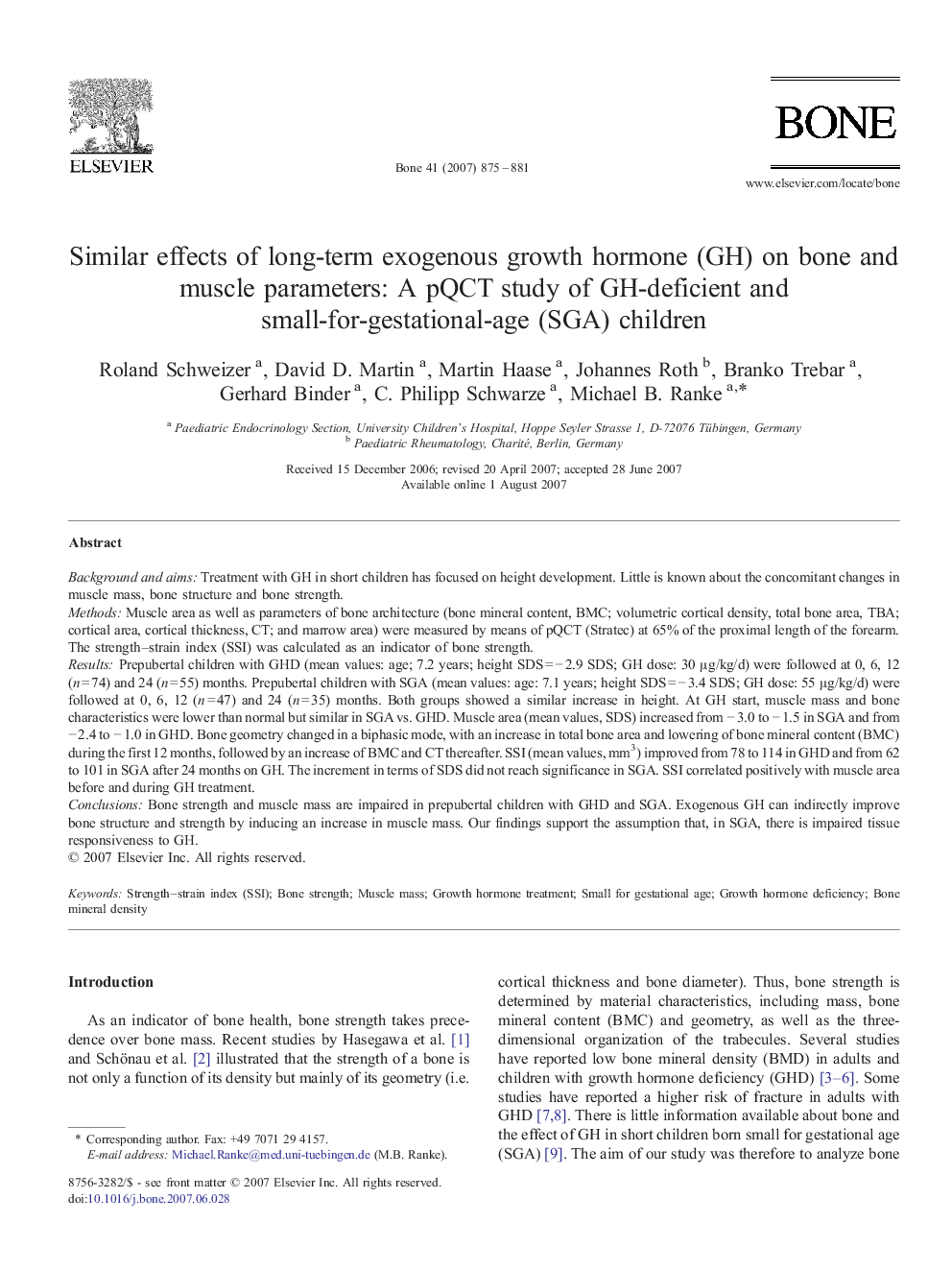| کد مقاله | کد نشریه | سال انتشار | مقاله انگلیسی | نسخه تمام متن |
|---|---|---|---|---|
| 2781505 | 1153325 | 2007 | 7 صفحه PDF | دانلود رایگان |

Background and aimsTreatment with GH in short children has focused on height development. Little is known about the concomitant changes in muscle mass, bone structure and bone strength.MethodsMuscle area as well as parameters of bone architecture (bone mineral content, BMC; volumetric cortical density, total bone area, TBA; cortical area, cortical thickness, CT; and marrow area) were measured by means of pQCT (Stratec) at 65% of the proximal length of the forearm. The strength–strain index (SSI) was calculated as an indicator of bone strength.ResultsPrepubertal children with GHD (mean values: age; 7.2 years; height SDS = − 2.9 SDS; GH dose: 30 μg/kg/d) were followed at 0, 6, 12 (n = 74) and 24 (n = 55) months. Prepubertal children with SGA (mean values: age: 7.1 years; height SDS = − 3.4 SDS; GH dose: 55 μg/kg/d) were followed at 0, 6, 12 (n = 47) and 24 (n = 35) months. Both groups showed a similar increase in height. At GH start, muscle mass and bone characteristics were lower than normal but similar in SGA vs. GHD. Muscle area (mean values, SDS) increased from − 3.0 to − 1.5 in SGA and from − 2.4 to − 1.0 in GHD. Bone geometry changed in a biphasic mode, with an increase in total bone area and lowering of bone mineral content (BMC) during the first 12 months, followed by an increase of BMC and CT thereafter. SSI (mean values, mm3) improved from 78 to 114 in GHD and from 62 to 101 in SGA after 24 months on GH. The increment in terms of SDS did not reach significance in SGA. SSI correlated positively with muscle area before and during GH treatment.ConclusionsBone strength and muscle mass are impaired in prepubertal children with GHD and SGA. Exogenous GH can indirectly improve bone structure and strength by inducing an increase in muscle mass. Our findings support the assumption that, in SGA, there is impaired tissue responsiveness to GH.
Journal: Bone - Volume 41, Issue 5, November 2007, Pages 875–881